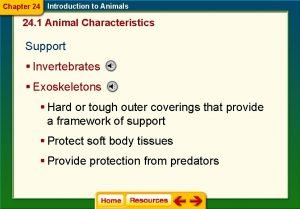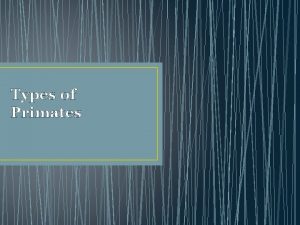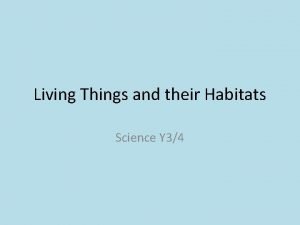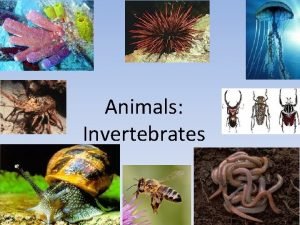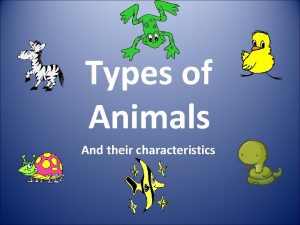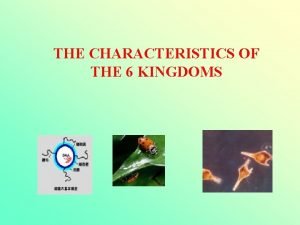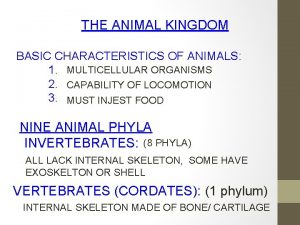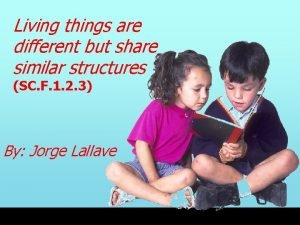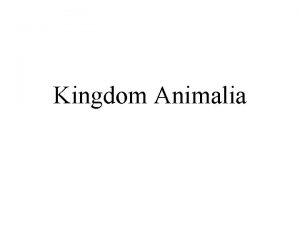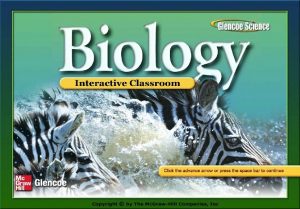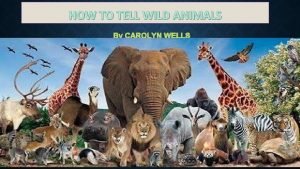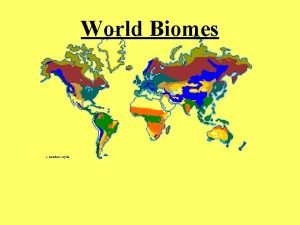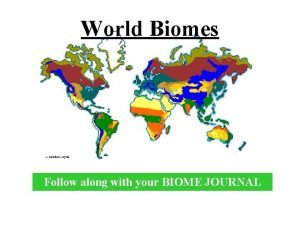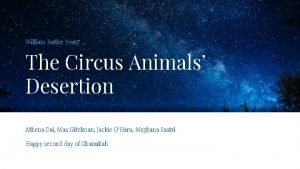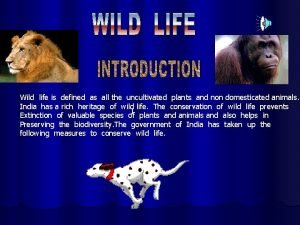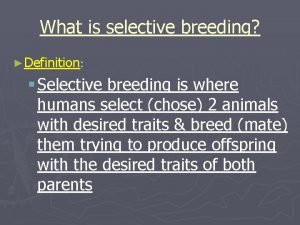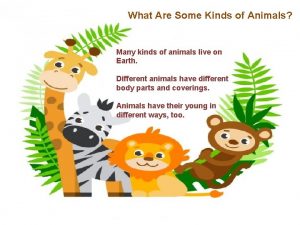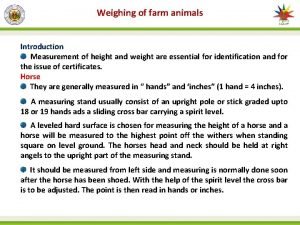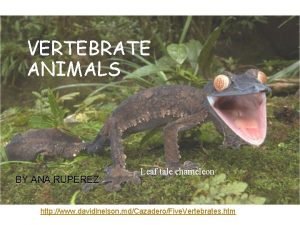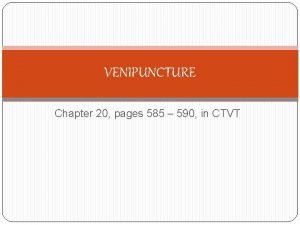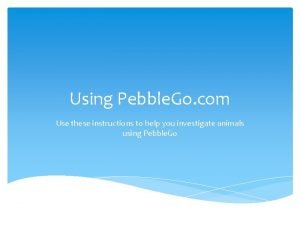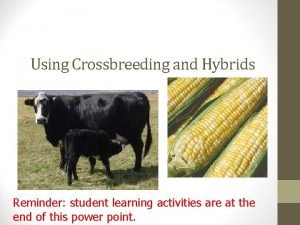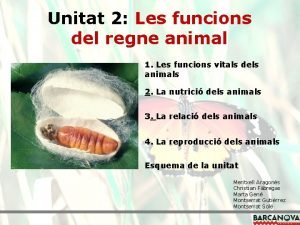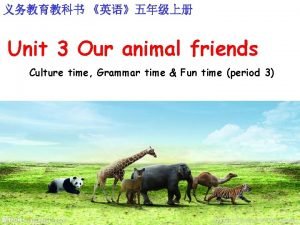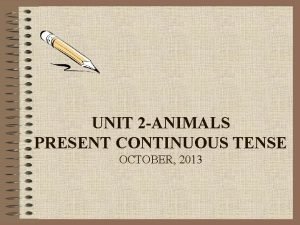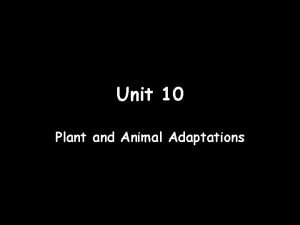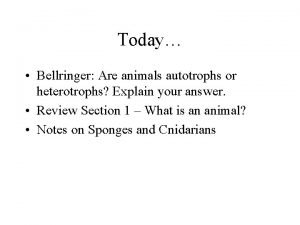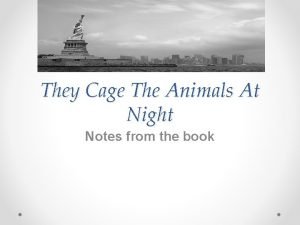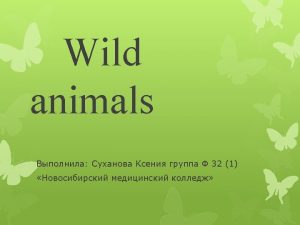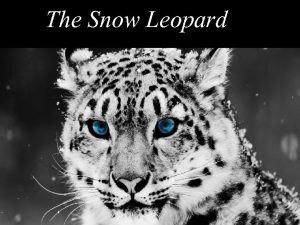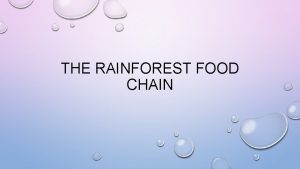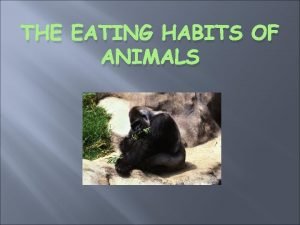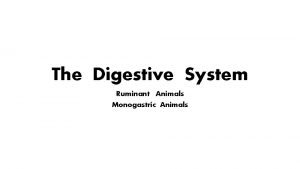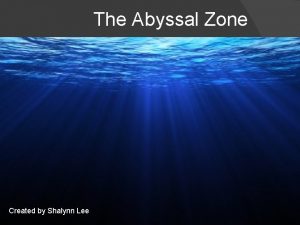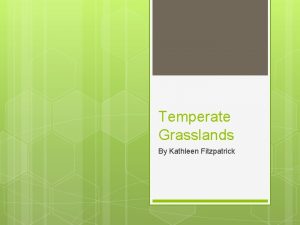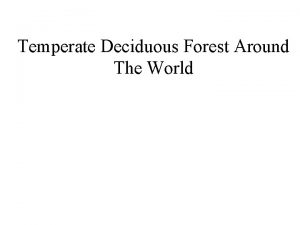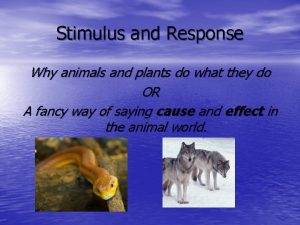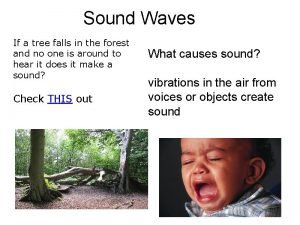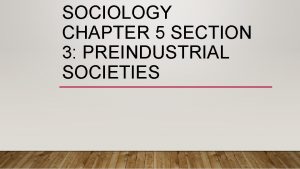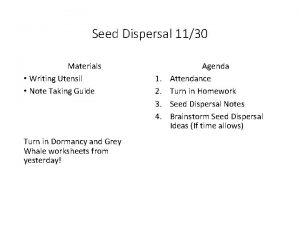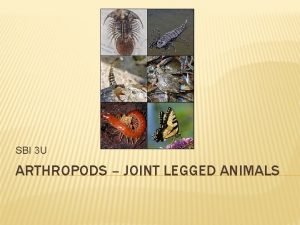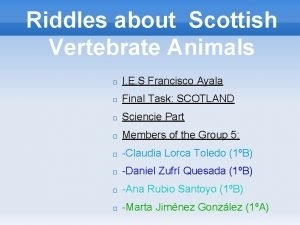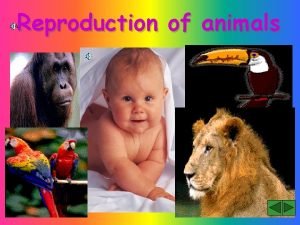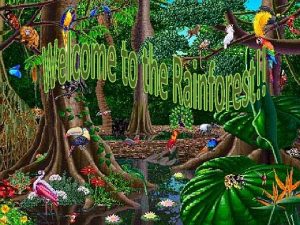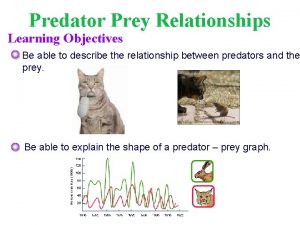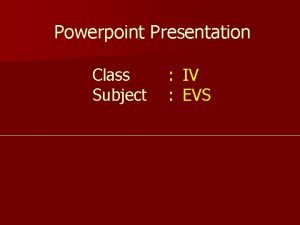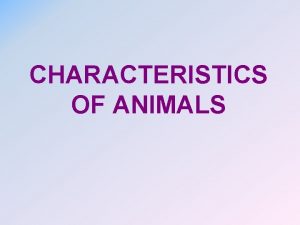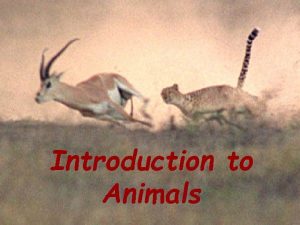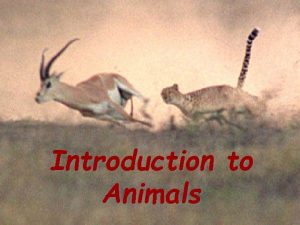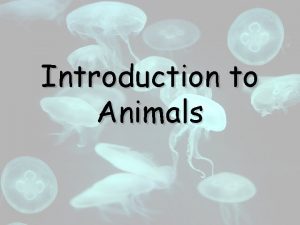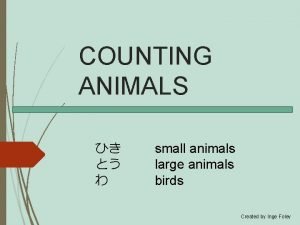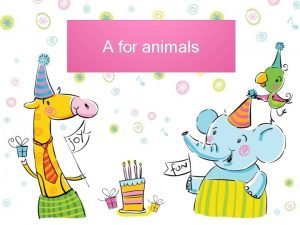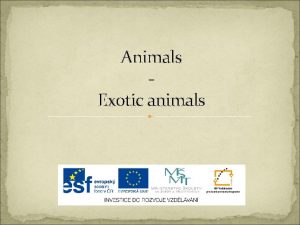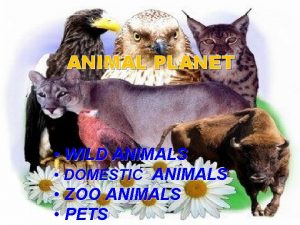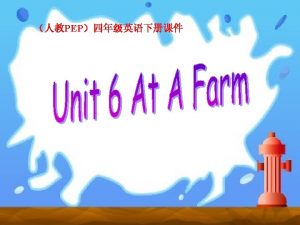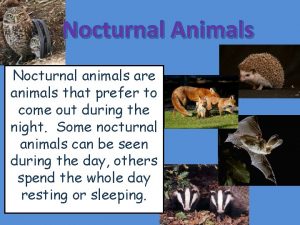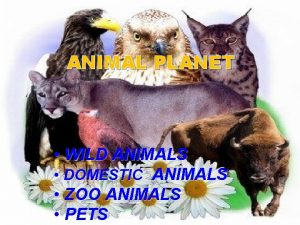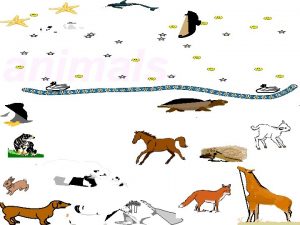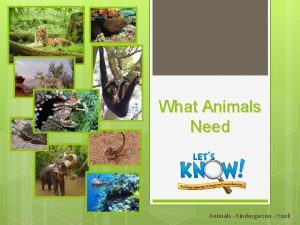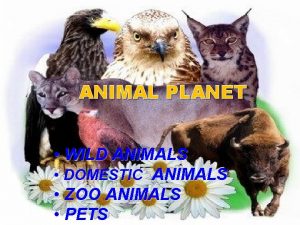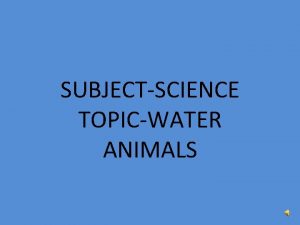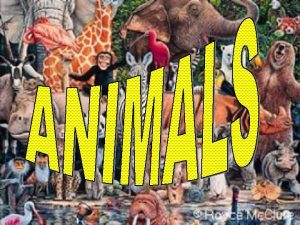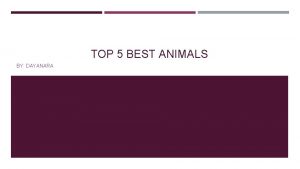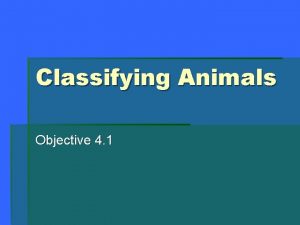Introduction to animals Introduction to Animals Characteristics of

























































- Slides: 57

Introduction to animals Introduction to Animals

Characteristics of Animals • All multicellular • Eukaryotes (cells with nucleus & organelles) • No cell wall • Ingestive heterotrophs (take in food and internally digest it)

Lions Feeding (Ingestion)

Support Systems • Have some type of skeletal support • Endoskeleton inside and made of cartilage &/or bone • Exoskeletons found in arthropods – Cover the outside of the body – Limit size – Must be molted making animal vulnerable to predators

Cicada Molting Exoskeleton

Movement • Animals such as sponges may be sessile (attached & non-moving) • Animals that move very little are said to be sedentary (clam) • Animals that can move are motile • Have muscular tissue to provide energy for movement

SESSILE Sponge SEDENTARY Chiton MOTILE Cheetah

Reproduction in Animals • All animals are capable of sexual reproduction

Leeches Exchange Sperm During Mating leech Mating

Female Beetles Mating Courtship Young Male Mating and Mating Behaviors

Atom Molecule or compound Levels of Organization Organ Tissue Organ system Organelle CELL Life begins Organism

Levels of Organization • animals show these levels – cell, tissue, organ, and organ system • Sponges are the ONLY animals that have just the cellular level • Cells may specialize (take own different shapes and functions)

Surfaces (Most Animals) DORSAL Back or upper surface POSTERIOR ANTERIOR Tail or hind end Head or Front VENTRAL Belly or lower surface

Body Symmetry • Symmetry is the arrangement of body parts around a central plane or axis • Asymmetry- no symmetry (sponges)

Body Symmetry • Radial symmetry occurs when body parts are arranged around a central point • Most animals with radial symmetry are sessile (attached) or sedentary (move very little)


Body Symmetry • Bilateral symmetry is when animals can be divided into equal halves • Organisms will have right and left sides mirror images of each other • Most complex type of symmetry

Body Symmetry • Animals with bilateral symmetry are usually motile • Animals have an anterior and posterior ends • Show cephalization (concentration of sensory organs on the head or anterior end)


Body Symmetry

Tissues

Tissue Development • Zygote (fertilized egg) undergoes rapid cell divisions called cleavage • Forms a hollow ball of cells called the blastula

Blastula A hollow ball of cells • The blastocoel is the center cavity of the blastula with 1 germ layer (blastoderm)

• Form tissues, organs, Germ & systems • NOT present in sponges • Ectoderm (outer) – forms skin, nerves, sense organs • Endoderm (inner) – forms digestive, respiratory • Mesoderm (middle) – forms muscles, excretory, bones, circulatory Layers

Body Layers • Sponges have NO tissues or organs, only specialized cells • Cnidarians like jellyfish & coral have only two body layers & one body opening (mouth/anus) into gastrovascular cavity • Cnidarians have outer epidermis & inner gastrodermis with jellylike mesoglea between the layers


Body Cavities

Coelom - Body Cavity • Internal body cavity fully lined with mesoderm (coelomates) • Body organs suspended in this cavity • Eucoelomates – “true” coelom vertebrates & some invertebrates

Coelom - Body Cavity • Acoelomate animals have solid bodies filled with cells • Acoelomate animals include sponges, cnidarians, & flatworms

Coelom - Body Cavity • Pseudocoelomate animals (roundworms) have a functional body cavity NOT fully lined with mesoderm (ex. nematodes)

Images from: http: //www. geocities. com/animalbio/biology/DIGESTIO. gif Digestive Systems Only one opening (two way): FOOD IN and WASTE OUT through same opening

Digestive Systems • Animals with a two openings (oneway digestive system have a mouth and an anus • Food enters the mouth, continues in one direction through the digestive tract, and wastes leave through the anus • Most efficient • Includes annelids, arthropods, & vertebrates

One-Way Digestion Mouth anus

Circulatory Systems • Transports oxygen & nutrients to cells • Carries away wastes & carbon dioxide from cells • Sponges, cnidarians, & flatworms do NOT have circulatory systems

Circulatory Systems • In closed circulation, blood remains inside blood vessels until it reaches cells (annelids & vertebrates) • In open circulation, blood is pumped out of blood vessels to bathe tissues in the body cavity (arthropods & mollusks)

Closed Circulation Open Circulation

Invertebrate groups


Characteristics of Invertebrates • Simplest animals • Contain the greatest number of different species • Most are aquatic (found in water) • Do NOT have a backbone • Includes sponges, cnidarians, flatworms, roundworms, annelids, mollusks, arthropods, and echinoderms

Sponge - Porifera Osculum of Sponge

More Cnidarians Brain Coral Red jellyfish

Flatworms - Platyhelminthes Marine Flatworm Planarian

Roundworms (Nematoda) and Segmented Worms (Annelida) Nematode Leech (segmented worm)

Mollusca (With and Without Shells) snail nautilus scallop nudibranch octopus

Arthropoda (insects, spiders, crustaceans, horseshoe crab) spider crayfish Horseshoe crab Dung beetle

Echinoderms Sea fan (crinoid) starfish Brittle star Sand dollar Sea cucumber


Vertebrata • More complex animals • have a backbone made up of individual bones called vertebrae • From simplest to most complex, the phylum includes: fish, amphibians, reptiles, birds, and mammals

Vertebrata • Vertebrates have endoskeletons (internal) • Some vertebrates have skeletons of cartilage (sharks, rays, and skates) • Other vertebrates have skeletons of bone and cartilage (reptiles, birds, & mammals)

Bone & Cartilage in Fetus

Fish lancelet ray damselfish anglerfish

Amphibia salamander toad frog newt

Reptilia Turtle Snake Lizard Alligator

Birds - Aves hummingbird ostrich lovebirds

Mammalia

That’s all folks! Study for your test! • Introduction to Animals • Section 18 -1 and 26 -1 in your text • Classification

 Chapter 24 section 1 animal characteristics
Chapter 24 section 1 animal characteristics Https//a-z-animals.com/animals
Https//a-z-animals.com/animals Producers consumers and decomposers
Producers consumers and decomposers Detritus food chain
Detritus food chain Carnivore
Carnivore Types of anthropoids
Types of anthropoids What are the main characteristics of animals
What are the main characteristics of animals Characteristics of invertebrates animals
Characteristics of invertebrates animals Animals and their characteristics
Animals and their characteristics 7 animal kingdoms
7 animal kingdoms Characteristics of animal kingdom
Characteristics of animal kingdom Characteristics of animals as living things
Characteristics of animals as living things Characteristics of animalia kingdom
Characteristics of animalia kingdom Chapter 24 section 1 animal characteristics
Chapter 24 section 1 animal characteristics How to identify wild animals
How to identify wild animals Essay structure introduction
Essay structure introduction Location
Location Deciduous forest plants and adaptations
Deciduous forest plants and adaptations The countess cathleen summary
The countess cathleen summary Non domesticated animals and uncultivated plant life
Non domesticated animals and uncultivated plant life Why did orwell use animals instead of people
Why did orwell use animals instead of people Chihuahuan desert animals
Chihuahuan desert animals Selective breeding animals
Selective breeding animals Kind of animal
Kind of animal Methods of weighing animals
Methods of weighing animals 5 vertebrate animals
5 vertebrate animals Saphenous vein dog
Saphenous vein dog Pebblego.com animals
Pebblego.com animals Example of hybridization in animals
Example of hybridization in animals Regne animal esquema
Regne animal esquema Teamwork animals working together
Teamwork animals working together Present continuous animals
Present continuous animals Camel adaptations
Camel adaptations Are sponges autotrophs or heterotrophs
Are sponges autotrophs or heterotrophs They cage the animals at night
They cage the animals at night Two types of animals
Two types of animals Snow leopard niche
Snow leopard niche Amazon food chain
Amazon food chain Eating habits of herbivores
Eating habits of herbivores Ruminant digestive system
Ruminant digestive system The hadel zone
The hadel zone Facts about grassland biome
Facts about grassland biome Temperate deciduous forest animals adaptations
Temperate deciduous forest animals adaptations Kinesis vs taxis
Kinesis vs taxis Commensalistic
Commensalistic Stimulus in animals
Stimulus in animals Echolocation animals
Echolocation animals Subsists primarily by raising animals
Subsists primarily by raising animals Chapter 20 sexual reproduction in animals
Chapter 20 sexual reproduction in animals Seed dispersal by animals worksheet
Seed dispersal by animals worksheet Animals can make their own food
Animals can make their own food Joint footed animals are called
Joint footed animals are called Example of roughage feed
Example of roughage feed Scottish field 3 animal riddle
Scottish field 3 animal riddle How do animals reproduce
How do animals reproduce Emergent layer animals
Emergent layer animals Predation and prey
Predation and prey Slidetodoc
Slidetodoc
